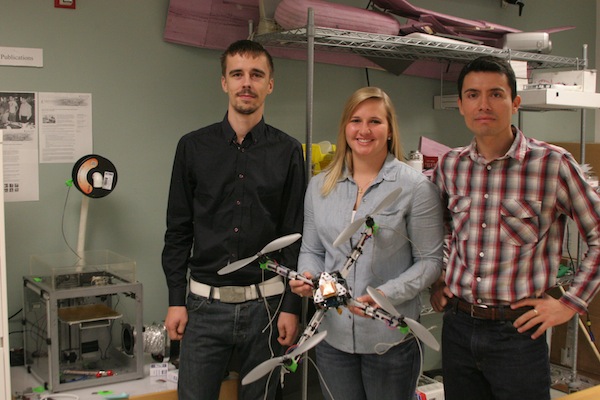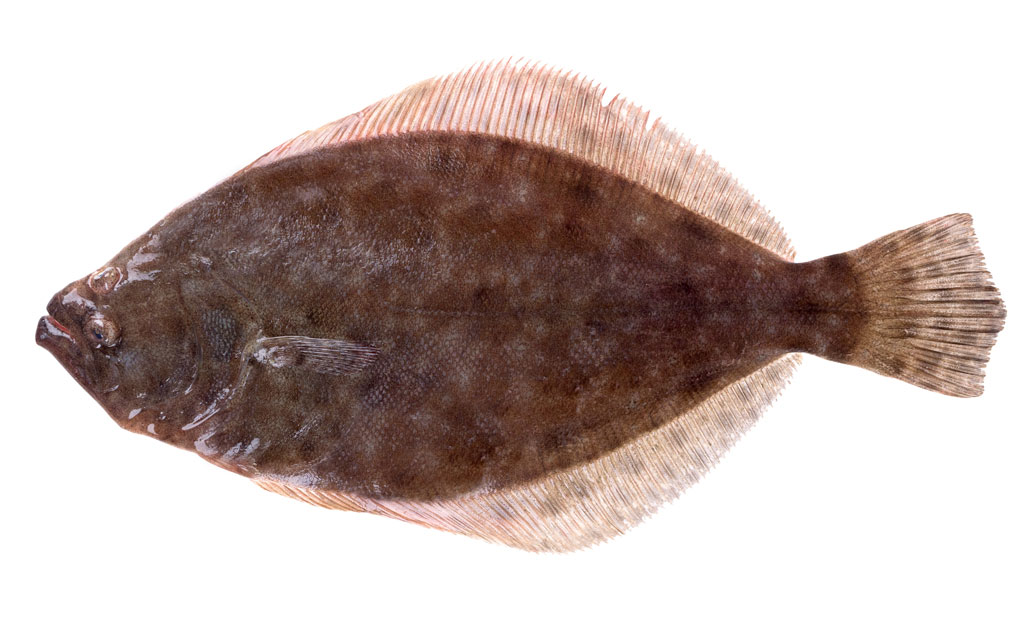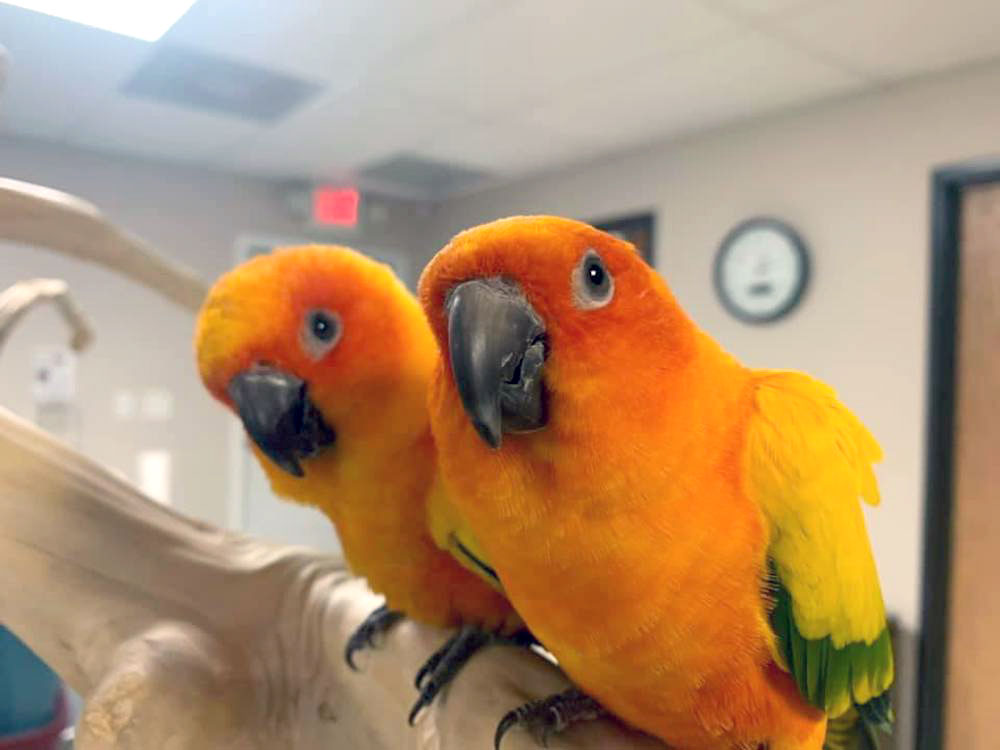
Cristoph Hintz (left), Lindsey Biehler and Professor Dr. Luis Garcia in Dr. Luis’ lab at Texas A&M University-Corpus Christi with one of their homemade drones. Staff Photo
The home of the drone is taking unmanned flight into new realms of possibility, developing vehicles that can transition from horizontal to vertical and communicate with one another to coordinate movement.
Professors at Texas A&M University-Corpus Christi, which recently became one of only 11 test sites in the United States for drone research, are sponsoring senior projects for undergraduates that go way beyond a typical written thesis.
“Most of the students who come here want to be involved with the test site and the drones,” said Dr. Luis Garcia, who teaches a control systems class that allows students to turn pure math into a reality that flies without remote controls.
One of the senior projects Garcia is supervising involves five students who are building an octo-copter that can transform itself from a horizontal configuration to vertical in the event of lost rotors or in the face of narrow entries. Garcia, himself, is working with other students on getting three ground vehicles to travel in formation by communicating their positions to one another. He wants to take that to the air as well.
“My research goal is to create — long term — teams of vehicles working in a corporative way to increase performance of autonomous agents in missions,” he said. “If you have one person looking for someone who is lost, and it takes two hours, then two vehicles can cut that in half.”
Part of the problem he and the students face involves the computers needed on board the vehicles on the ground and in the air. The computers are just too heavy.
Weight is an issue with each piece of the drone, from the homemade plastic parts to the paint. An attempt by a senior group last year to fly a vertical octo-copter was unsuccessful because the spraypaint used on the body was too heavy, said student Lindsay Biehler, who is part of this year’s octo-copter team.
Biehler is a fifth-year senior and an assistant coach for women’s golf at TAMU-CC. She spent the past four years in engineering classes and playing NCAA golf. Being asked to join Garcia’s UAS team was a great honor she said.
“I’m excited,” she said. “This type of project that we’re doing has never been done before.”
The team, which is led by senior Christoph Hintz of Germany, plans to have the system in the air by April. The first semester was spent planning, designing and computing. Some parts were designed by computer and created on a 3-D printer. Others are on order. Assembly will begin in the spring semester.
“Our project is about search-and-rescue for small, tight spaces,” she explained. “We use all our skills from all our other classes to design.”
Real-world implications for this senior undergraduate project include everything from construction site work to disaster rescue to wildlife resource monitoring and beyond.
“The more this technology improves, the bigger impact it will have on the economy,” Garcia said.
While the United States lags behind other countries in allowing commercial use of drones in the airspace, the technology will eventually take off, Garcia said. TAMU-CC is already on the forefront of helping make that happen, from working on new government regulations to developing the next phase of drone technology.





